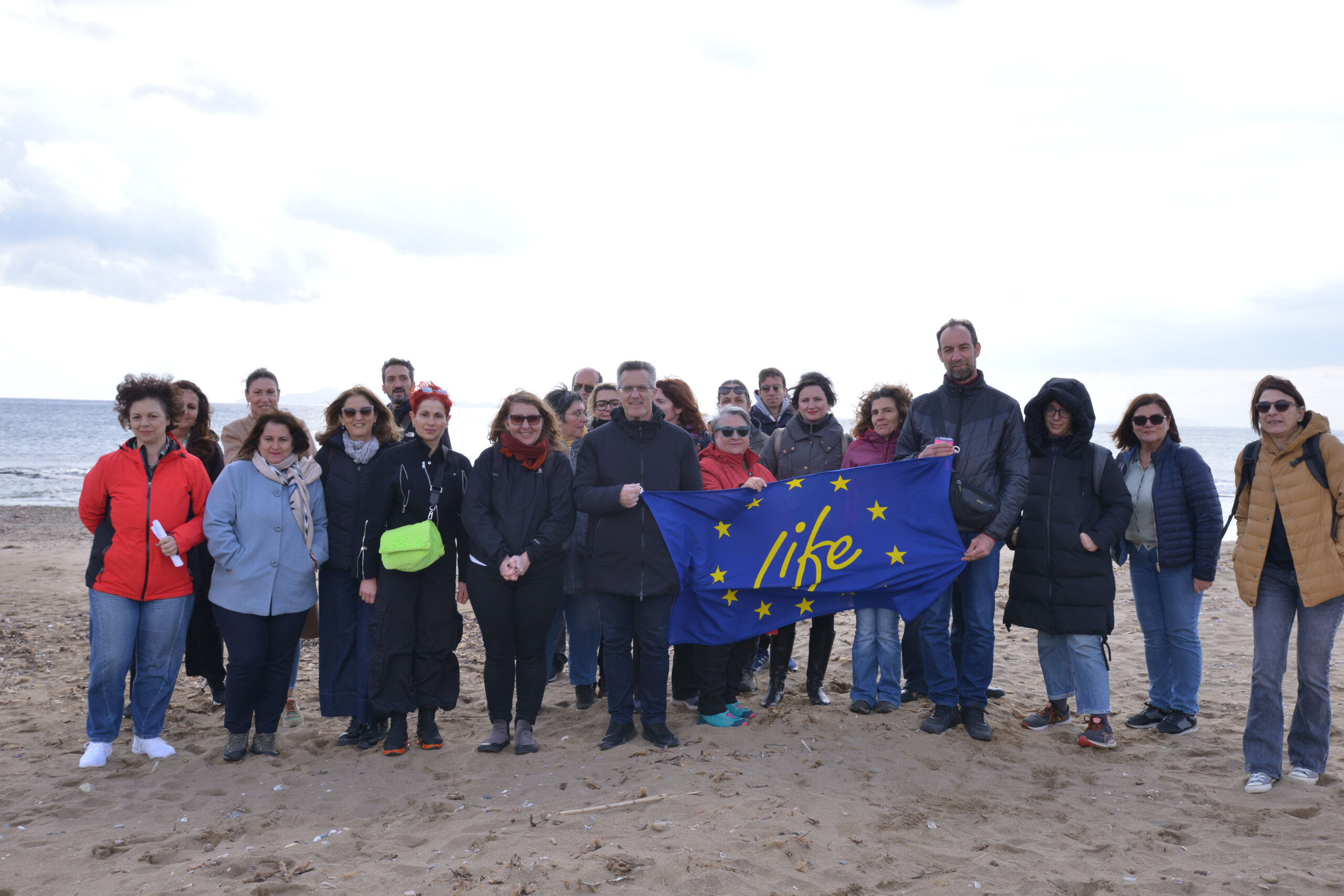
The 7th Meeting of the LIFE-IP 4 NATURA project was successfully completed
At the meeting, which took place on February 13 and 14, the challenges and the workplan for the next period were discussed, with the aim of successfully completing the project.
The first day of the meeting -taking place in the Green Fund Villa Kazouli Amphitheater in Athens- hosted presentations of the actions’ results delivered during the project implementation’s 6th year, as well as of the actions’ future work.
The presentations addressed the management measures proposed to be implemented for the Natura 2000 sites of Dikti and Sounio, the results of the mapping and assessment of ecosystem services (MAES) in pilot areas, the progress in the implementation of the National Action Plan for three vulture species (Gypaetus barbatus, Gyps fulvus and Aegypius monachus) and the National Action Plan for the Carpathian Frog (Pelophylax cerigensis), the development of the participatory geographic information system (ppGIS/webGIS) for the visualization and monitoring of ecosystem services, the decision support system for the competent authorities regarding projects and activities within the Natura 2000 network and the management of the areas (DSS LIFE-IP 4 NATURA), the stakeholders capacity building activities including the special e-learning platform, as well as the awareness campaign and other communication actions of the project.
On the second day of the meeting, the participants had the opportunity to visit the Natura 2000 sites GR3000005 “Sounio – Nisida Patroklou kai Paraktia Thalassia Zoni” and GR3000014 “Periochi Legrenon – Nisida Patroklou”, which were selected in the framework of action C.2 for the pilot application of a management plan.
Through successive stops at points of interest and the delivery of pertinent presentations, points with significant ecological, geological, mineralogical, historical, cultural, aesthetic and touristic value were highlighted. At the same time, an opportunity was given to discuss the management measures proposed by the Region of Attica, after cooperation with the Ministry for the Environment and Energy, Green Fund and NECCA, in the context of the management plan pilot implementation.

The participants visited the Lavrio Fishing Port where the first net collection bin is located and a presentation was made by members of the NECCA Management Unit of National Parks of Parnitha & Schinias and the PAs of the Saronic Gulf on the success of the action, the information that has been given to the fishermen of the area but also the overall image of the Fishing Port.
The tour and constructive discussions continued in the National Park of Sounio. In “Egoilo Chaos”, a very impressive sinkhole with a diameter of 120 m and a depth of 55 in the shape of a heart, which is located in the area of Kamariza, the visitors were informed by the representative of the Lavreotiki Geopark about the geological & mineralogical values of the area. A presentation was made of the rock zones that can be distinguished in the sinkhole and a reference was made to the mineral wealth of the area – hundreds of ores that still exist today in Lavreotiki, among which 29 are typical for the area (type locality mineral). Of course, the presentation did not miss the reference to the approval of the addition of the Lavreotiki Geopark in the UNESCO Global Network of Geoparks, earlier in 2023 (https://geoparklavreotiki.gr/).
The visitors had the opportunity to be informed by the officers of the Lavreotiki Forest Service about the state of the ecosystems after the last catastrophic fire that hit the Sounio National Forest, but also about the reforestation that has been carried out and exhibits very positive results. At the same time, a demonstration of the ppGIS/webGIS application, developed in the context of the LIFE-IP project, was held for the assessment of ecosystem services and the reporting of pressures on ecosystems by members of the Aristotle University and the University of Patras.
Officials of the Eastern Attica Ephorate of Antiquities referred, via an impressive presentation, to the admirable mining and metallurgical technique developed in the area of Lavrio during antiquity, conducting a tour of the ancient “laundries” preserved in the area that were used to clean the ores.
In the Legrain coastal wetland, the discussion continued on the challenges presented for the management of areas with ecological values that at the same time facing increased tourist interest, such as many coastal areas of Attica.
The meeting concluded with a short visit to the Temple of Poseidon, an area connected to important ecological and cultural services, and another interesting tour by the officers of the Eastern Attica Ephorate of Antiquities.
Warm thanks are due to the Region of Attica, NECCA and the Green Fund who organized the meeting in an exemplary manner, as well as to the local NECCA Management Unit, the Unesco World Geopark of Lavreotiki, the Lavreotiki Forest Service and the Eastern Attica Ephorate of Antiquities, whose executives shared their knowledge about biodiversity as well as about the geological and archaeological importance of the regions.
